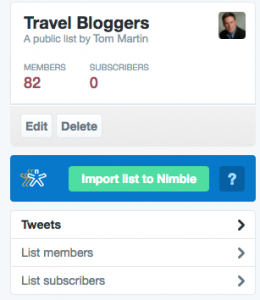No matter how hard you may try, bad hires will still happen in your organization. If that sounds like doom and gloom then fear not, because you’re not alone in that situation. In fact, in 2012 a whooping 69% of organizations made a bad hire that adversely affected their organization, according to a study done by CareerBuilder. This means the hire not only made it through the hiring process, but also had a negative impact on the company. However, while you may not be completely free of bad hires, there are ways to help ensure you don’t mistakenly make a bad hire.
Chasing The “Perfect Hiring Asymptote”
 In math, an asymptote is a number that you get closer to but never actually reach. If we think about that in terms of hiring, the asymptote might be a perfect hiring record of no bad hires, only contributors with high performance and retention rates. While it’s desirable and it’s something that can be approached, few (if any) companies have that perfection.
In math, an asymptote is a number that you get closer to but never actually reach. If we think about that in terms of hiring, the asymptote might be a perfect hiring record of no bad hires, only contributors with high performance and retention rates. While it’s desirable and it’s something that can be approached, few (if any) companies have that perfection.
But if “perfection in hiring” is the asymptote that we approach but never reach, the approach itself is the efforts and strategies we put into our talent acquisition strategies. And there are countless ways to build a strategy that reduces bad hires and focuses on what the organization needs from their talent; whether those needs be in skill, personality, motivation, performance, or any mix of other variables.
In a recent recruiter.com article, a handful of methods designed to help organizations find the best candidates available were explored. These strategies were effective, and we had some thoughts of our own to add to them.
- Teamwork Simulations: Recruiter.com talks about this concept similarly to how you’d envision a live job simulation to work, in which you’ll “set up multiple scenarios that require one person to lead and the others to participate as team members. Each candidate should have one turn as a leader.”This is a great strategy, but much like with all live simulations it can be hard to create a work environment representative of your own. That’s why multimedia simulations are crucial – you can create closed environments that are representative of your organization. That way, you’re not just measuring how a candidate performs with their team, they’re seeing how they’ll perform with your team.
- Trial Days: If the hiring process is evaluating whether or not the candidate would be a good fit, then the best solution might be to bring them in and actually have them do the job. “During these [trial] days, candidates should meet team members, participate in meetings, and even do some actual work,” according to Recruiter. Additionally, “there’s no better way to get behind a candidate’s smokescreen than to really watch them in action.”Much like with the teamwork simulations, bringing a candidate in and having them test drive the job can be highly effective. But it’s not the only method. Once again, multimedia job simulations can do these trial days just as effectively. The benefit of a multimedia simulation as opposed to actually bringing the candidate in is time: you don’t have to worry as much about trying to find a mutually-beneficial time for you and the candidate for a job simulation, since the candidate can take it during their own free time and you can process the results with your time.
- Contextual Interviewing: This type of interviewing, according to Recruiter, is when context of the interview needs to be taken into consideration. Recruiter uses a sales example to explain this, which Candidate A might have double the sales of Candidate B, but Candidate A might also be working in a much easier sales environment than Candidate B. In reality, Candidate B may be the better candidate of the two, but if the interviewer fails to assess the context of each candidate, they may mistakenly hire Candidate A.”Contextual interviewing is highly effective and very important, but it shouldn’t be the only context-based approach you should consider using. Skill assessments and other hiring assessment tools are equally important in that they can provide qualitative data on the candidate in question. Combining qualitative data from these assessments with a contextual interview not only gives you a more holistic view of the candidate in question, it gives you a chance to focus in on what you need to ask during the interview because you’ll already understand what their skills/personalities are and how they fit into your organization.
Business & Finance Articles on Business 2 Community
(100)
Report Post






